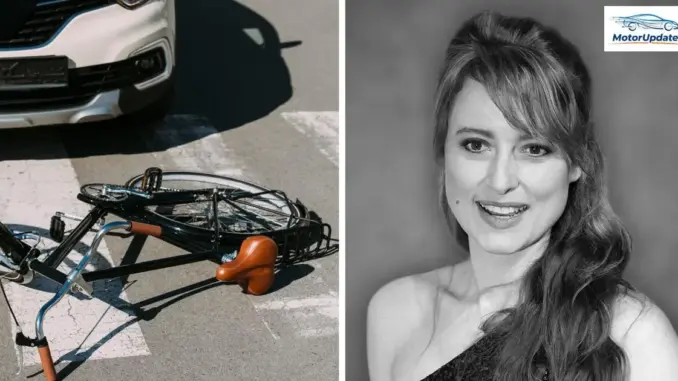
Did one door change a city? The fatal collision that killed actress Wanda Perdelwitz has reopened old debates. Now cities and citizens face tough questions about cycling safety.
Background of the Accident
What happened in Hamburg shocked many. On 28 September, Wanda Perdelwitz cycled in Rotherbaum and hit an open van door. She suffered a severe head injury and died on 6 October after intensive care.
What Is “Dooring”?
Have you heard the term before? Dooring is when a parked car door opens into a passing cyclist. The impact can be sudden and fatal, like a hidden trap on the road.
Why Dooring Is So Dangerous
Is the danger obvious? Cyclists have little time to react when a door swings open. The door acts like a barrier that stops the bike instantly, causing high-energy falls and severe head trauma.
Rising Numbers in Hamburg
Why is this happening more often? Hamburg recorded eleven cyclist deaths in 2025, with recent cases linked to dooring. Public grief led to a vigil of about 800 people and a white ghost bike placed at the crash site.
Causes Behind Dooring and Road Conflicts
Could better design prevent these crashes? Narrow streets, parked vehicles, and close bike lanes increase collision risk. Human factors matter too; passengers sometimes open doors without checking behind them.
Human Behavior and Brief Inattention
How much does inattention weigh in? A single glance away can be enough to miss a passing cyclist. The result can be catastrophic in a split second.
The “Dutch Reach” and Simple Habits
What small action can save lives? The Dutch reach asks drivers to use the far hand to open doors. This forces a shoulder turn, making it easier to spot oncoming cyclists before opening.
Why the Dutch Reach Works
Is it really effective? It creates a physical routine that prompts a look over the shoulder. Studies and campaigns show it reduces dooring incidents where taught and adopted.
Infrastructure Solutions for Safer Streets
Can roads be redesigned to help? Protected bike lanes separated from parked cars lower collision risk. A one-meter buffer from parking spaces to cycle tracks makes a proven difference.
Examples from Cycling Cities
Which cities lead by example? Copenhagen and Amsterdam use continuous, protected lanes and clear separation. Their designs act like a safety fence between bikes and doors.
Design Details That Matter
What specific features help most? Raised bike paths, physical curbs, and parking set back from lanes reduce door strikes. Painted lanes alone are not enough to stop collisions.
Policy, Enforcement, and Public Campaigns
Who must act beyond planners? Authorities can enforce safe parking and push education campaigns. Fines, driver training, and visible signage all reinforce safer habits.
Cultural Change and the Role of High-Profile Cases
Why does a famous victim change the conversation? Tragedies like this focus public attention and accelerate reforms. Vigils and media coverage build pressure for faster improvements.
Practical Tips for Cyclists
How can riders reduce risk right now? Ride one meter away from parked cars when safe to do so. Scan doors, wear visible clothing, and keep speed controlled near parked vehicles.
Practical Tips for Drivers and Passengers
What can drivers do immediately? Use the Dutch reach every time. Check mirrors and glance back before opening doors, especially on busy streets.
Conclusion
What should cities and people do next? Combine better infrastructure with behavior change and enforcement to cut dooring risks. Small habits and smart design together can save lives.

Leave a Reply